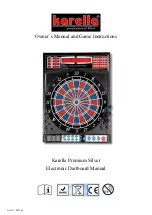
Technical data
ConOx
46
ba75383e04
04/2009
Pin assignment
Characteristic data
on delivery
Zero signal
< 0.1 % of the saturation value
Response time at 20 °C
(68 °F)
t
90
(90 % of the final value display after) < 10 s
t
95
(95 % of the final value display after) < 16 s
t
99
(99 % of the final value display after) < 60 s
Own consumption of
oxygen at 20 °C (68 °F)
0.008
μ
g·h
-1
(mg/l)
-1
Drift
approx. 3 % per month in the operating condi-
tion
Working life
min. 6 months with one electrolyte filling
4
2
5
3
8
6
1
7
NTC
30 k
Ω
Voltage electrode 2
Current electrode 1
Voltage electrode 1
Counter electrode
Working electrode
NTC
NTC
Current electrode 2
Conductivity basic module
DO module
Shield
wire
Plug from the front:
4
5
7
3 8
2
6
1
Plug connection:
GE
AE
Cod
GE
GE
AE
Cod
AE



































